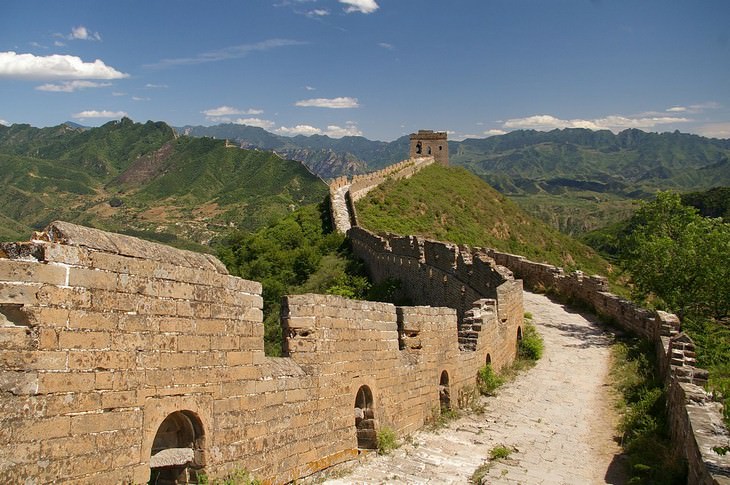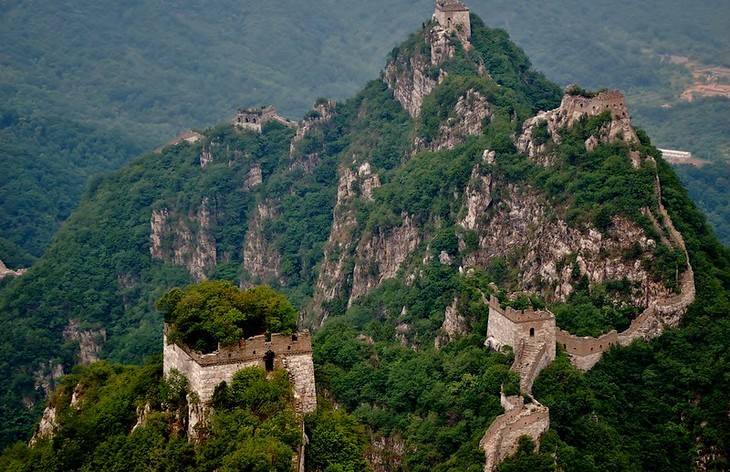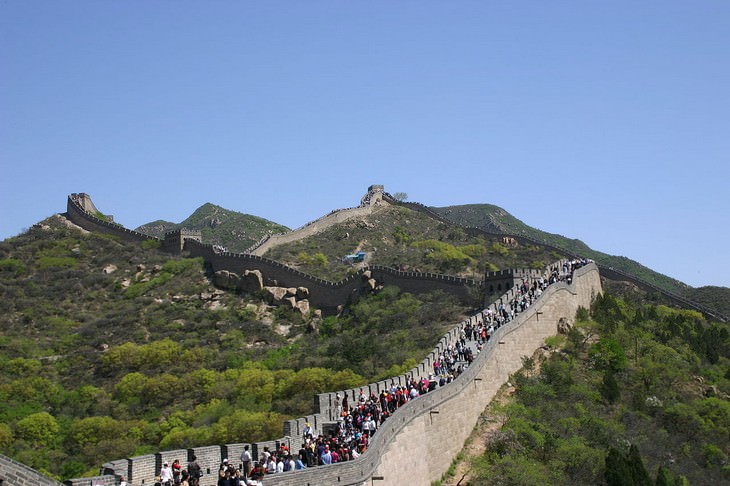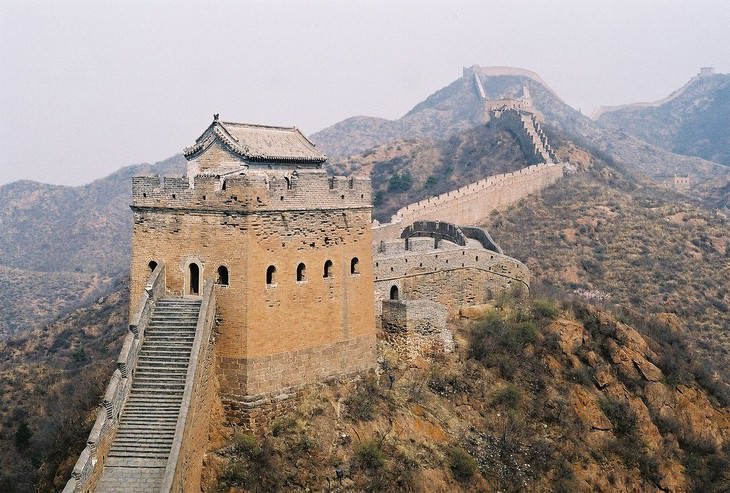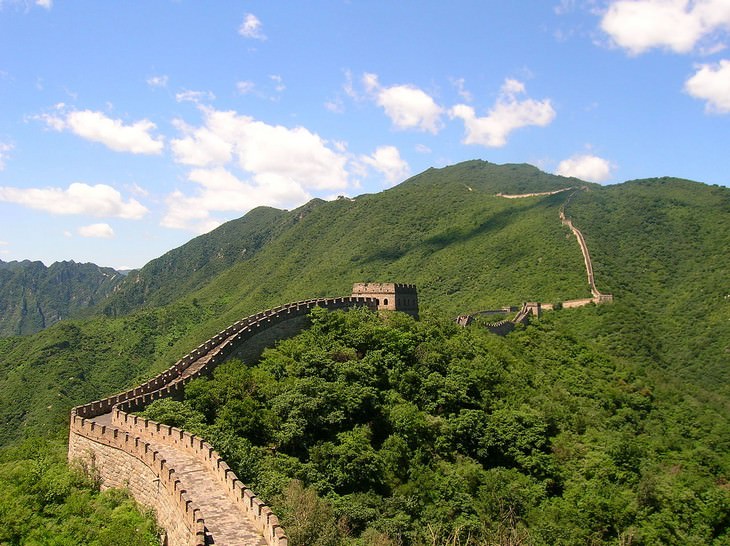1. Shanhaiguan
This area is called the "Dragon's Head," and it is actually one of the ends of the Great Wall of China and the place where it meets the Bohai Sea in eastern China. Over the years, the structure in this area has suffered significant damage, but despite parts of the original wall being destroyed many years ago, it has been repaired, restored, and today serves as a popular destination for many tourists who want to document their journey to the East with an unforgettable backdrop. If, in addition to photos, you are also interested in learning about the people who built and manned the Great Wall, visit the fascinating museum dedicated to this architectural wonder in the nearby city of Qinhuangdao.
2. Gubeikou
A two-hour drive from Beijing will take you to one of the wildest and most satisfying sections you can explore along the Great Wall of China. Much of the structure in the Gubeikou area has not been restored, which means the fortifications you see there were laid down hundreds of years ago, and you can literally touch and feel history. It is believed that about 130 battles took place along this section in the past, but today, this is one of the quieter parts of the wall, making it a recommended destination if you want to avoid the crowds found at places like Shanhaiguan or other similar areas.
3. Simatai
This section of the Great Wall winds up and down the Yan Mountains, and it is famous for the steep inclines that are amazing to think about how the Chinese builders managed to create under such conditions. Along this section of the wall, there are many watchtowers, some even quite close to each other. Since this is one of the few sections of the wall illuminated at night, it is highly recommended to visit the area during the evening hours.
4. Huanghuacheng
"The Wall by the Lake" is the name given to this section, and it is easy to guess that it's due to its geographical location near a lake, where the wall actually passes through the lake in certain parts. The blue waters of the lake provide a stunning contrast to the green surroundings and vegetation that has overtaken the fortifications over the years. There are several hiking trails in the area that allow visitors to enjoy this unique landscape. Although this area attracts relatively few visitors, if you choose to visit, don't miss the opportunity to sail on the lake and see the wall from a unique angle.
5. Jiankou
About 70 kilometers north of Beijing lies this area, considered one of the most challenging and, therefore, the most magnificent for those who want to explore the Great Wall of China. This section was completed in 1368 and has not been restored since, meaning its condition is quite poor, and the local vegetation covers large parts of it. However, many believe this is part of the area's charm. Additionally, you can find here the "Beijing Knot," which is the name for the most northwestern watchtower in the Jiankou area, where three different sections of the Great Wall meet.
6. Badaling
This section of the wall was built in 1504 and is one of the best-preserved and restored areas, making it very easy to walk along, which is why many visitors choose to do so. In fact, it is one of the busiest areas along the wall, and some people believe this only enhances the experience, as there are souvenir shops, restaurants, and various amenities that make the trip more comfortable for families or older tourists. At the same time, although the wall itself is often crowded, the hills it crosses remain almost unaffected by the hustle and bustle, offering great views of the vast Chinese landscapes.
7. Jinshanling
For hiking enthusiasts, this is probably the most beautiful and recommended section of the Great Wall, thanks to the combination of a peaceful atmosphere and magical views. It stretches along Hebei province, and one of the things that make it special and recommended is that parts of the wall have been restored here over the years, while others remain in their original state. The contrast between these parts makes a walk along this section fascinating and full of surprises. At the same time, this section of the wall includes 67 watchtowers along 10.5 kilometers, showcasing different architectural and building styles, guaranteeing a wealth of diverse sights and incredible photo opportunities. If you're planning to hike in the area, know that it takes about a full day (around 7-8 hours of walking) to get from Jinshanling to the Gubeikou section mentioned earlier in this article.
8. Mutianyu
Mutianyu is another section of the Great Wall located relatively close to Beijing, but the crowds of tourists who flock to areas like Shanhaiguan or Badaling rarely visit here. This is surprising and good news for those who dream of experiencing this wonder in all its glory, as this is the longest restored section of the wall. If you are traveling in China independently and not as part of an organized tour, it is recommended to visit here and enjoy great views that include watchtowers, fortresses, and various fortifications. You can ascend to the wall in this area by cable car or as part of a hike, and if you're adventurous, you can descend using special toboggans available on-site.



